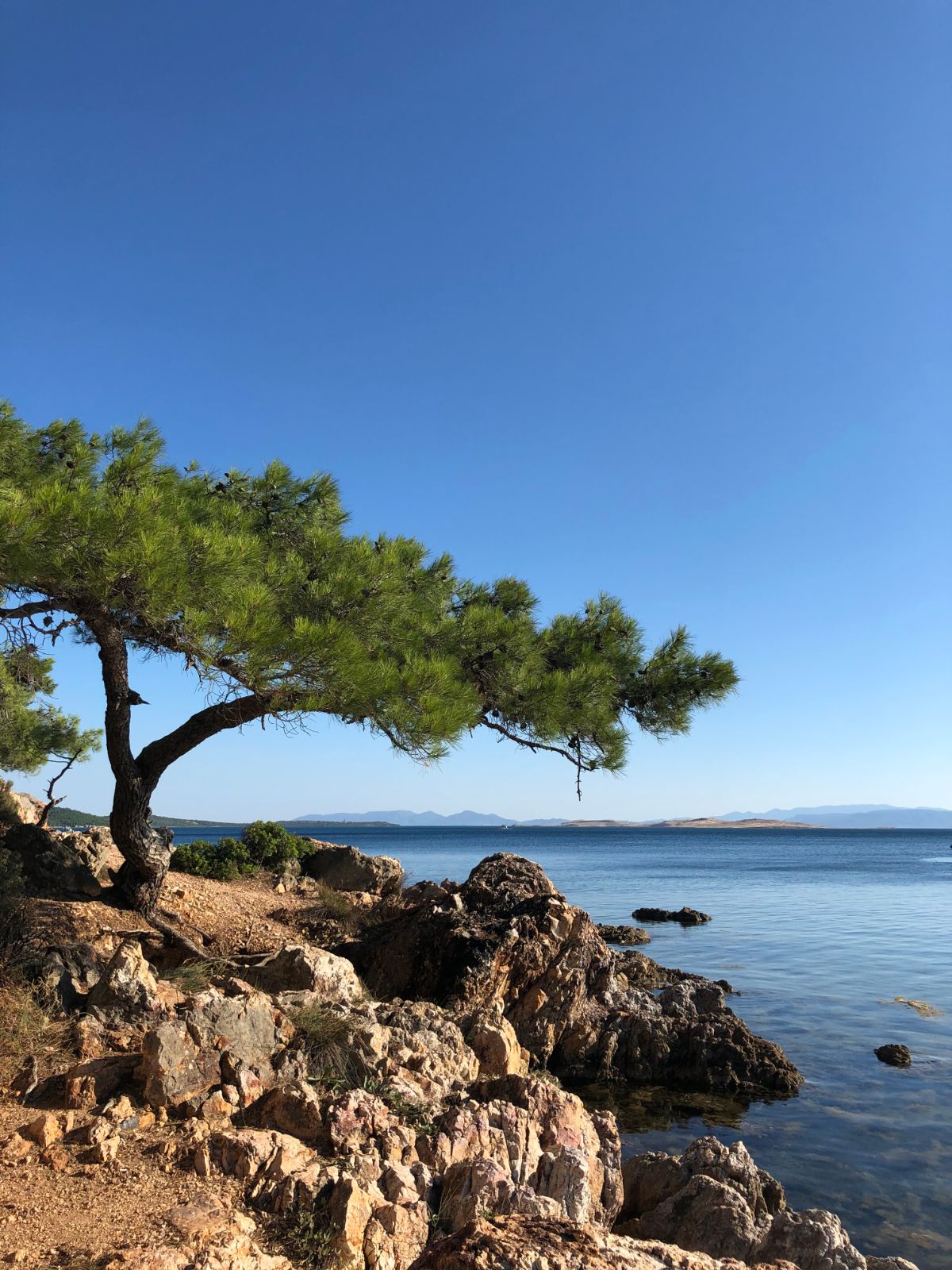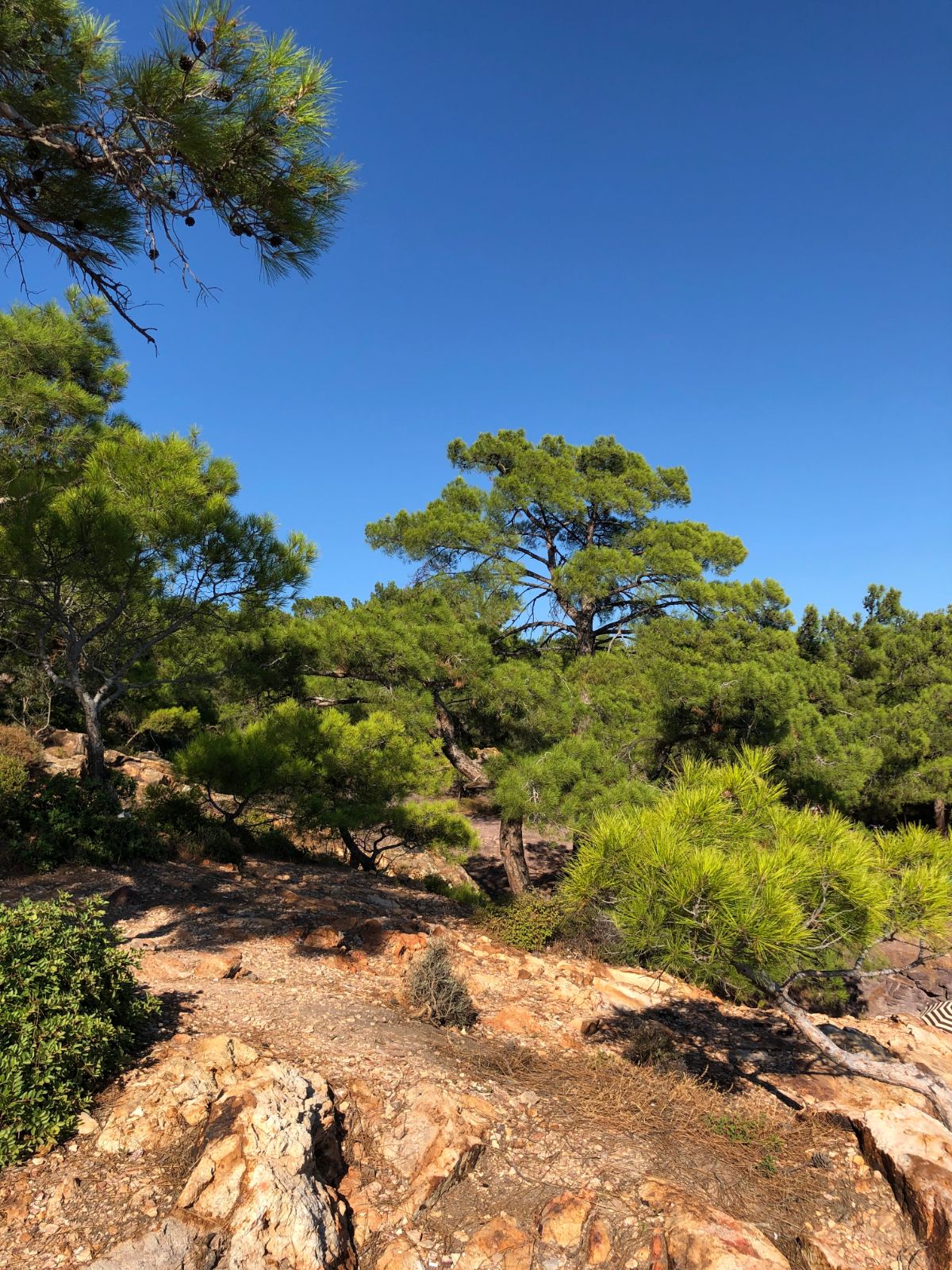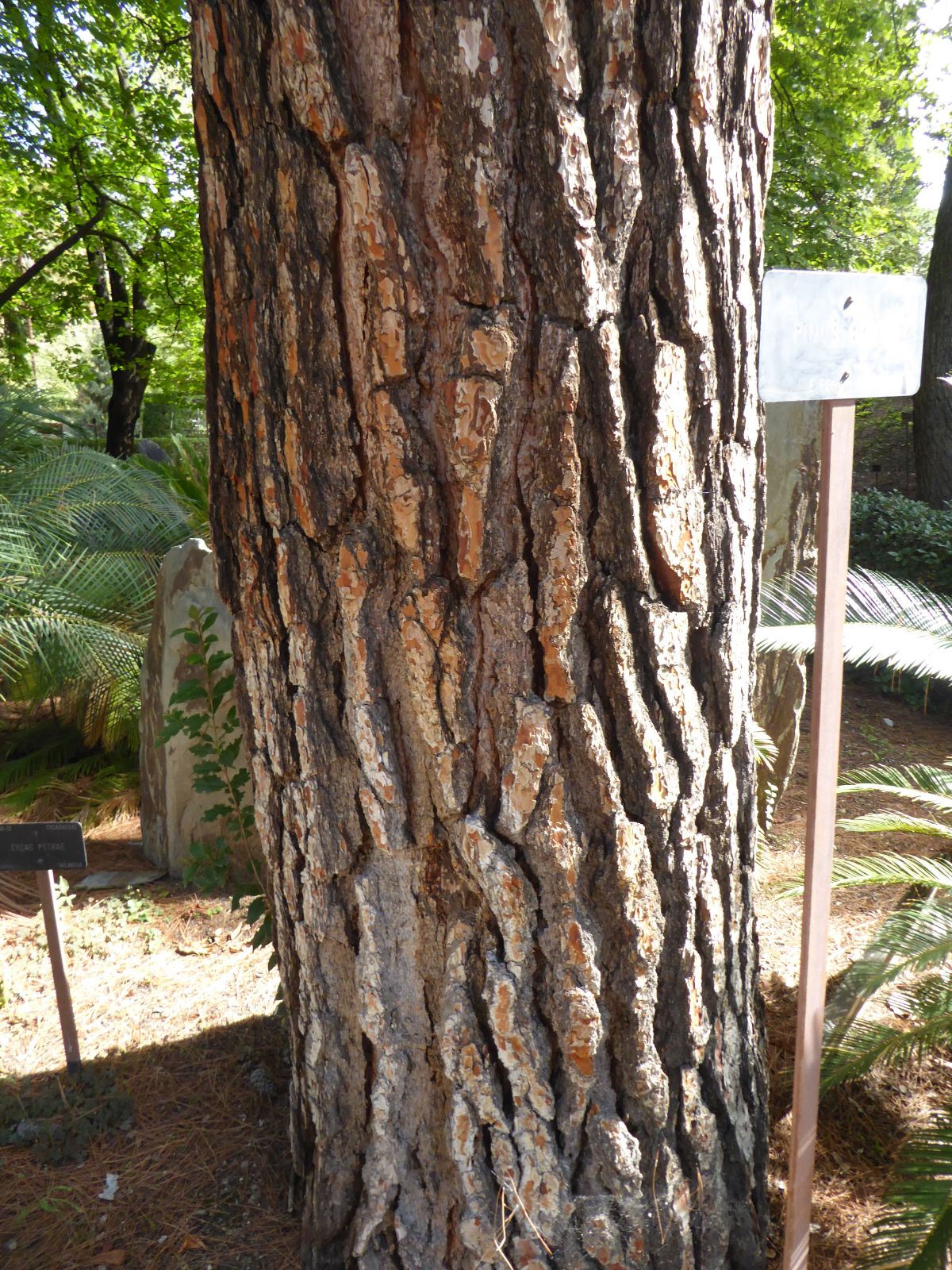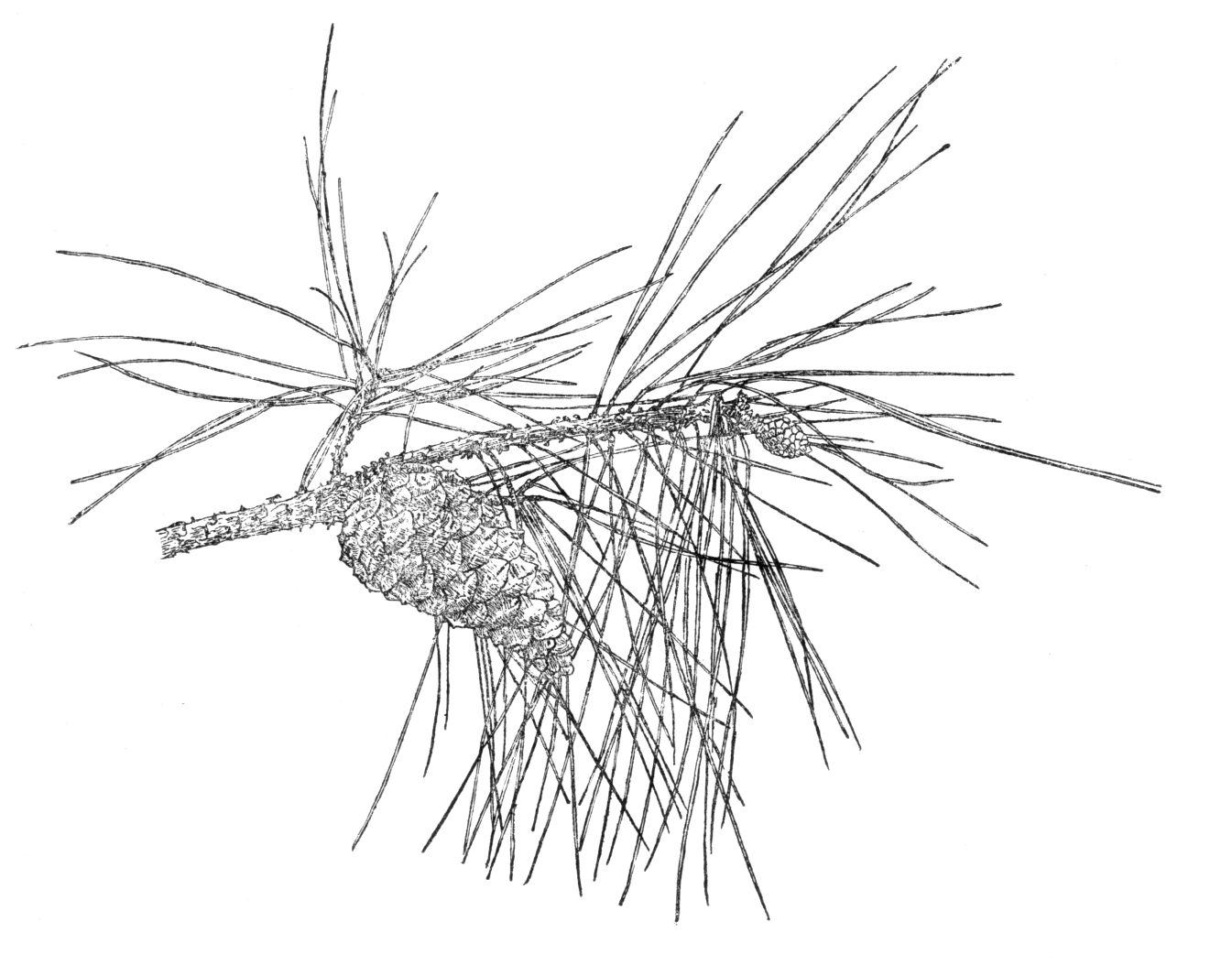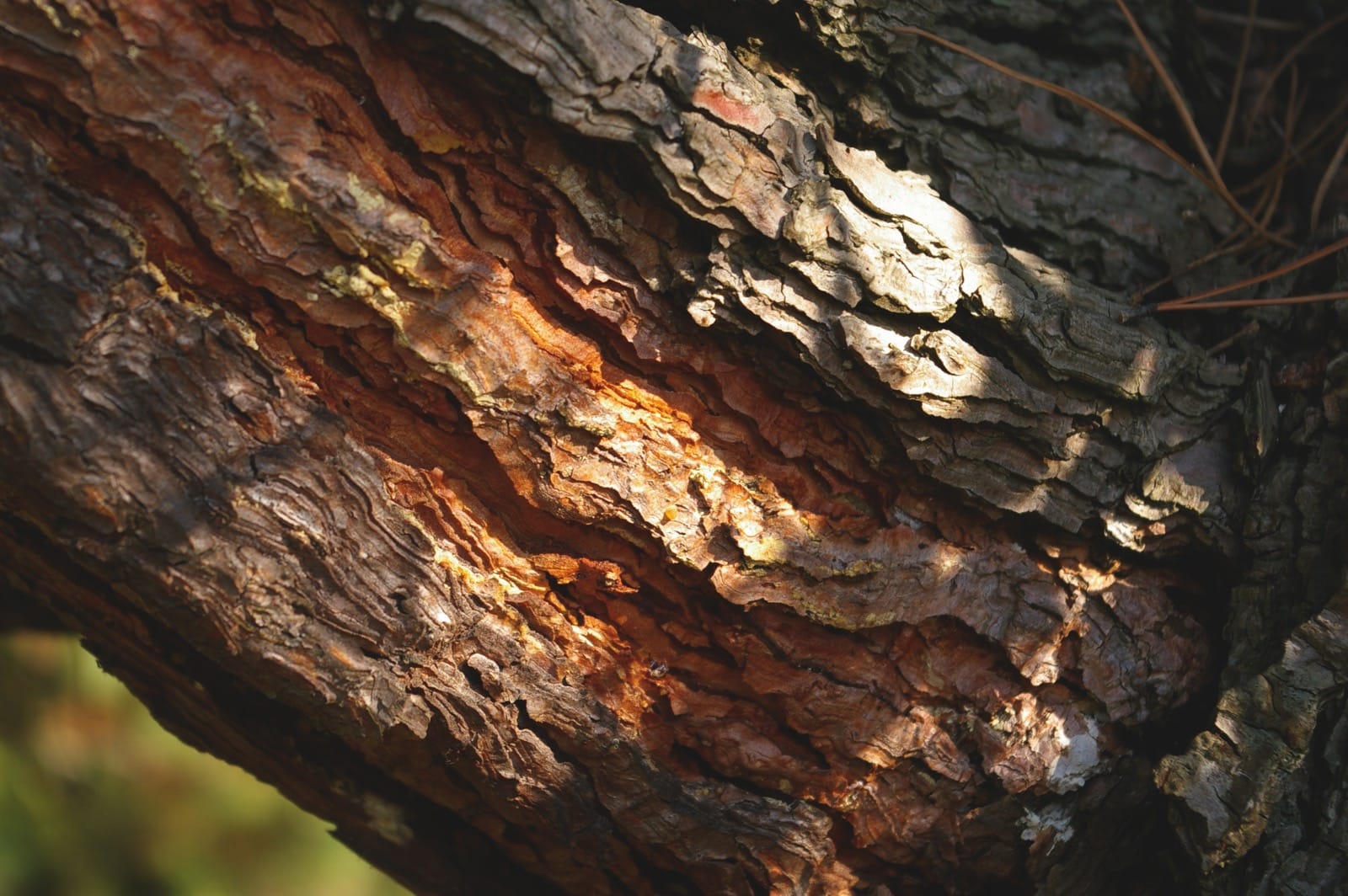Pinus brutia
Credits
Article from Bean's Trees and Shrubs Hardy in the British Isles
Article from New Trees by John Grimshaw & Ross Bayton
Recommended citation
'Pinus brutia' from the website Trees and Shrubs Online (treesandshrubsonline.
Genus
- Pinus
- Subgen. Pinus, Sect. Pinus
Synonyms
- P. halepensis var. brutia (Ten.) Henry
- P. pyrenaica of some authors, in part
Other taxa in genus
- Pinus albicaulis
- Pinus arizonica
- Pinus armandii
- Pinus attenuata
- Pinus ayacahuite
- Pinus balfouriana
- Pinus banksiana
- Pinus bhutanica
- Pinus bungeana
- Pinus canariensis
- Pinus cembra
- Pinus cembroides
- Pinus chiapensis
- Pinus contorta
- Pinus coulteri
- Pinus culminicola
- Pinus densata
- Pinus densiflora
- Pinus devoniana
- Pinus durangensis
- Pinus echinata
- Pinus edulis
- Pinus elliottii
- Pinus engelmannii
- Pinus eremitana
- Pinus flexilis
- Pinus gerardiana
- Pinus greggii
- Pinus × hakkodensis
- Pinus halepensis
- Pinus hartwegii
- Pinus heldreichii
- Pinus henryi
- Pinus × holfordiana
- Pinus hwangshanensis
- Pinus jeffreyi
- Pinus johannis
- Pinus koraiensis
- Pinus lambertiana
- Pinus leiophylla
- Pinus longaeva
- Pinus massoniana
- Pinus maximartinezii
- Pinus monophylla
- Pinus montezumae
- Pinus monticola
- Pinus morrisonicola
- Pinus mugo
- Pinus muricata
- Pinus nelsonii
- Pinus nigra
- Pinus oocarpa
- Pinus orizabensis
- Pinus palustris
- Pinus parviflora
- Pinus patula
- Pinus peuce
- Pinus pinaster
- Pinus pinceana
- Pinus pinea
- Pinus ponderosa
- Pinus pseudostrobus
- Pinus pumila
- Pinus pungens
- Pinus quadrifolia
- Pinus radiata
- Pinus remota
- Pinus resinosa
- Pinus rigida
- Pinus roxburghii
- Pinus sabiniana
- Pinus serotina
- Pinus sibirica
- Pinus strobiformis
- Pinus strobus
- Pinus sylvestris
- Pinus tabuliformis
- Pinus taeda
- Pinus taiwanensis
- Pinus teocote
- Pinus thunbergii
- Pinus torreyana
- Pinus virginiana
- Pinus wallichiana
- Pinus wangii
- Pinus yunnanensis
Although by some authorities regarded as a variety of P. halepensis, this seems to be a distinct, though closely related, species. The tree is of thin, ungainly habit; its leaves (in pairs) are 4 to 6 in. long, its young shoots are green, and more flexible than in P. halepensis; finally, its cones point forwards instead of backwards, and are thicker (2 in.) at the base. It is rather lacking in attractive qualities, being thin in branch and leaf and inferior in this respect to P. halepensis. It was described by Tenore in 1811 and was said by him to occur wild in western Calabria, though it has not been rediscovered there since. Its main distribution is in Asiatic Turkey and the Near East, as far east as Kurdistan; it also occurs in the Aegean and Cyprus.
P. brutia is rare in cultivation, the only large specimen recorded being one at Kew, which measures 44 × 6 ft (1971).
This species was by some 19th-century botanists confused with P. nigra var. cebennensis under the name P. pyrenaica.
From the Supplement (Vol. V)
specimens: Kew, 42 × 61⁄4 ft (1980); National Botanic Garden, Glasnevin, Eire, 59 × 43⁄4 ft (1980).
From New Trees
Pinus brutia Ten.
(Subgen. Pinus, Sect. Pinus)
Calabrian Pine, Turkish Pine
Tree to 35 m, trunk straight and slender. Bark thin, flaky, reddish orange, becoming reddish brown, fracturing into plates separated by longitudinal fissures. Crown open and rounded. Branchlets slender, greyish brown; vegetative buds not resinous. Leaves in fascicles of two, persisting for one and a half to two and a half years, bright green or yellowish green, slender, straight and rigid, semicircular in cross-section, 10–18 × <0.1 cm, margins serrulate, apex acute; juvenile leaves glaucous, 1.5–4 cm long, and produced for up to four years; adult leaves first appearing about nine months to two years after germination. Fascicle sheaths 1–1.5 cm long, persistent. Cataphylls subulate, 0.1–0.2 cm long, light to dark brown. Male strobili 1.8 × 0.4 cm. Female cones subterminal, in whorls of three to four or rarely solitary, sessile or pedunculate; cones 5–11(–13) × 5–7 cm, mature in about 24 months, ovoid-conical, green, ripening orange-brown to red-brown in spring. Scales thick, rigid, woody; apophysis 1–1.5 × 1.5–2 cm, rhombic to pentagonal; umbo dorsal, flat or slightly raised. Seeds dark greyish brown; wings 1.5–2 × 1 cm, brown with yellowish streaks. Frankis 1993, 1999, Farjon 2005a. Distribution CYPRUS; GREECE: Crete and east Aegean islands; LEBANON; SYRIA; TURKEY. Pinus brutia is also present (though probably introduced) in Calabria – formerly Brutia – Province in southern Italy. Habitat Grows in a variety of habitats in the eastern Mediterranean, between 10 and 1500 m asl. USDA Hardiness Zone 7. Conservation status Lower Risk. Illustration Farjon 2005a; NT580. Cross-references B215, S373, K210.
There is considerable confusion regarding the infraspecific taxa of Pinus brutia. For example, Yaltirik & Boydak (2000) described var. densifolia from southern Anatolia, which had a dense, compact, spherical crown, but this feature of the habit was probably the result of environmental conditions or fungal infection (see discussion in Frankis 1999). A key to the varieties recognised by Farjon (2001) is presented below.
The cones of one form of P. brutia var. brutia, f. kruepericola Frankis, do not open widely on weathering, so trap the seeds. However, Krüper’s Nuthatch (Sitta krueperi) removes seeds from the cones and distributes them around the forest (Frankis 1992).
| 1a. | Leaves long (20–29 cm); Turkey (Mugla Province) | var. pendulifolia |
| 1b. | Leaves shorter (5–18 cm) | 2 |
| 2a. | Cones small (5–8 cm long); apophyses depressed, whitish grey; Azerbaijan and Georgia (Choban-Dagh Range) | var. eldarica |
| 2b. | Cones larger (6–11 cm long); apophyses slightly raised, greyish brown | 3 |
| 3a. | Leaves < 15 cm long; umbos indented; Caucasus (Georgia, Russia), Crimea | var. pityusa |
| 3b. | Leaves 10–18 cm long; umbos flat; Eastern Mediterranean (Bulgaria, Cyprus, Greece, Lebanon, Syria, Turkey) | var. brutia |
P pityusa Stev.
Synonyms
P. halepensis var. pityusa (Stev.) Gord
var. brutia
The typical variety has been considered rare in cultivation and was given a rather sparse description by Bean (1976b). When mature it can be quite an attractive tree, with a broad, rounded crown and many persistent cones thickening the canopy.
var. eldarica (Medw.) Silba
Common Names
Eilar Pine
Afghan Pine
Quetta Pine
This variety has shorter, stouter leaves (8–13 cm long) and smaller cones (5–8 cm long) than the type. The cone apophyses are depressed and whitish grey, and the seeds are at the larger end of the size range for the species. Frankis 1993, Farjon 2005a. Distribution AZERBAIJAN; GEORGIA. Habitat Restricted to a 500 ha area of the Choban-Dagh Range. The climate is semi-arid and steppe-like (Frankis 1993). USDA Hardiness Zone 7. Conservation status Data Deficient. Illustration NT592.
Pinus brutia var. eldarica is rare both as a truly wild tree and in cultivation in Europe, where it is grown in only a few collections, but it is widely cultivated in the southwestern United States where it copes well with dry heat and poor soils (Jacobson 1996). As a native tree it is restricted to a small area of Azerbaijan and Georgia, but it is widely naturalised or semi-cultivated across central Asia (Iran, Afghanistan and Pakistan). It has been speculated that it was transported by traders on the Silk Route (Conkle et al. 1988). There are several trees at Kew, grown from seeds received in 1978 from the Forestry Department of Afghanistan, at a time when such peaceable activities as seed-collecting were still possible there. These specimens range between 10 and 12 m in height, and vary slightly in habit, but all have very thick, strongly ridged reddish bark that oozes copious resin. In general the branches are held rather stiffly upright, but one tree has a more rounded outline. The bark peels from the branches in reddish flakes, and this alone makes it a curiously attractive tree. The American stock is also of Afghan origin, collected from the Herat region in the 1960s and distributed by the US Department of Agriculture (Jacobson 1996). Trees sold by Monrovia Nursery under the trademarked selling name Christmas Blue are apparently seedlings from a more glaucous parent tree (Jacobson 1996).
var. pendulifolia Frankis
This variety has longer, pendulous leaves (20–29 cm long), the trees superficially resembling P. canariensis from a distance. Frankis 1993, Farjon 2005a. Distribution TURKEY: Mugla Province. Habitat Similar to the type variety, with which it co-occurs. USDA Hardiness Zone 8. Conservation status Not evaluated.
This variety is in cultivation in Turkey (M. Frankis, pers. comm. 2007), but no trees have been traced in our area since Keith Rushforth’s specimen was killed by Armillaria.
var. pityusa (Steven) Silba
Synonyms
P. brutia var. stankewiczii (Sukacz.) Frankis
This variety has narrow leaves up to 15 cm long and indented umbos. Frankis 1993, Farjon 2005a. Distribution GEORGIA: Abkhazia; RUSSIAN FEDERATION: Krasnodar; UKRAINE: Crimea. Habitat Similar to that of the type variety. USDA Hardiness Zone 7. Conservation status Vulnerable. Cross-references B216, K231.
Var. pityusa has a limited presence in cultivation, with a few trees scattered through our area. Jacobson (1996) states that in the United States it is very inferior in performance compared to var. brutia and var. eldarica, and is seldom seen. In the United Kingdom the best example is probably one of several at the Sir Harold Hillier Gardens, measured at 8.1 m in 2008 (Sir Harold Hillier Gardens database). These were grown from seed collected in the former USSR for the French seed company Versepuy, received in 1985. Given the number of varieties of P. brutia, confirmation of identity probably requires reliable knowledge of provenance. Ukrainian material is sometimes distinguished as var. stankewiczii, on the basis of some electrophoretic characters (Conkle et al. 1988, Frankis 1993), but no specimens of Ukrainian origin are currently known to be in cultivation in our area (M. Frankis, pers. comm. 2007).

